MONDONGO
Date: February 10th – March 15th, 2016 – Opening February 09th 2016
Location: MAXXI – Museo nazionale delle arti del XXI secolo – Space D – Via Guido Reni 4A – 00196 Roma
Curator: Laura Buccellato – Massimo Scaringella
Mondongo is a collective of argentinian artists who work together since 1999. The group, integrated by Juliana Laffitte and Manuel Mendanha, emerged in the art scene in 2000. The originality of their material choices, such as plasticine, hair, feathers, biscuits, meat and cotton thread, allow them to create personal techniques and intricate textures. Also the artists organized their production in series, like landscapes and skulls. Works by Mondongo have been shown in USA, Spain, UK, China, Korea and several cities of Latin America, and can be found in public and private collections in Argentina and abroad. They live and work in Buenos Aires.
Landscape
Mondongo’s work is stunning: it has visual power, tactile sensuality, and constantly bears witness to a social concern that comments on the miseries, abuses, and the increasing gap between the “haves and the have nots.” Mondongo addresses the immense pockets of poverty and alienation on the outskirts of the city, and the corrupt manipulations of power that infect Argentinean life. The impact of this extraordinary series is one of visual saturation: image overload, closing us in with the natural cycles of birth, decay and rejuvenation where life re-emerges out of putrefaction. The beauty of the images comes through from some kind of primal chaos and swamps us, just as the land itself is swamped and underwater every year as a result of seasonal storms and floods.
Their versions of these landscapes overwhelm us with the kind of immediate presence that they themselves must have felt when they first encountered them. I am talking of a sense of awe, the suggestion of fear, mystery, and wonder before the world. They have scale and presence; they impinge and surprise. They are alive; now and again they serve as home to fragmentary chips of the symbolic and the allegoric. They are poor but indisputably seductive.
Skulls
The Skull series is littered with art historical references, quotes, associations, small jokes, and metaphorical allusions. Things accumulate as they do in life, amass and contradict each other, qualify or simply rub up against each other. We find ourselves bombarded by an overwhelming multitude of visual stimuli, akin in my mind to the intentions of open field verse where the fragmentary perceptions have to be both energy inputs and energy discharges, permitting fecund associations open to both literal and figurative meanings. It hardly needs saying that the process of making these infinite miniatures that pile up in the visual field is painstaking and laborious. Time becomes part of the experience of these works – time to read the details, time to absorb their impact. The conceptual ideas, however, that initially motivated the piece have changed. It is a kind of day-book that incorporates and embodies shifts in emphasis or changes in direction whilst, at the same time, retaining traces of the original intent. The skull has become a space in which Mondongo can think history or even more rhetorically the future of the race: the immense plague of humanity that spreads and occupies all, consuming the planet.
The parade of images that feeds the Mondongo collective pertains to the detailed registry of their real experiences, mixed with the digestive influxes of their great cultural tradition situated in a more ample conception. It lacks programmatic proclamations, for that visual culture forms a constituent part of their very own DNA.
It should not be overlooked that they were born as a collective, quickly turned into an artistic binary. That condition of plurality was the detonator that instigated their provocative attitude, which translated into their singular experimental development dense with significant materiality. Elements that initially pertained to different uses—slabs of meat, clay, threads, diverse materials amalgamated via secret recipes—are transformed into the subject-object of their pictorial praxis.
The bizarreness of the materials chosen creates feelings of attraction and repulsion that reveal somatic and semantic characteristics of an often-satiric and impactful realism, where all pictorial verbs are conjugated.
Obsessive details create forms and colors that highlight their pictorial wisdom with bombast and disconcerting effect, intersected by cultural references that go from the remote tradition to the classical, driven by their contemporary reinterpretation.
Mondongo’s works are pervaded by a disarming romantic melancholy that floods their landscapes (although not completely). They always include some imperceptible ironic wink, such as in their polypytch, decorated in an elliptical panorama that contains an allegory marked by the frightening awareness of an Heraclitean stream in which life and death succeed each other in the uncertain evolution of time, and nature becomes the tangible evidence of their existence.
Their art finds a microterritory where natura’s elusive grandeur brings one to personal mythologies that weave into a selective memory of their most intimate emotions, masterly expressed in their portraits, equally casual and personal. A meaningful example is the emblematic portrait of the controversial writer, their friend and mentor Fogwill, in which his human condition is unmasked in the wrinkles that traverse his face made up of blended threads crafting his dramatic decline, sublimated in the emotional intangibility that it breathes. That intangible latency can be sensed in every intersection made incarnate through their works.
Object proximity is the limit of detail in those “living portraits” that carry them into an irremediable flight, one whose camouflage, given its apparent crudeness, reveals the liberating force of that compelling objectual materiality that permeates the very surface they occupy. Like the skulls, composed as the Tower of Babel, seem to engulf the whole history of humanity.
Underneath that contaminating fascination emerges a suspicious fragileness, fed by the foreboding of an unreality, suggestive of the precariousness of the universe. This paradox hides itself in the ideology behind their observations, where the real, in constant mutation, becomes a representation of life itself.
LAURA BUCCELLATO









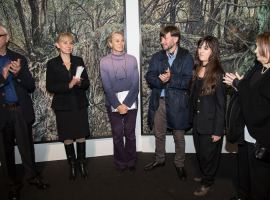








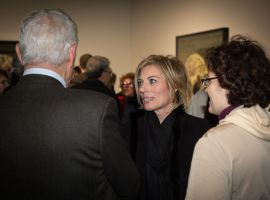






















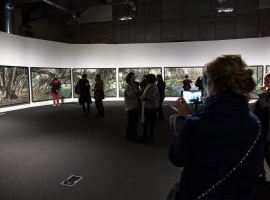


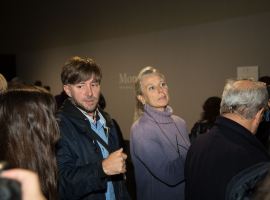






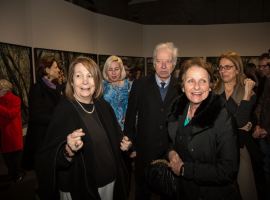












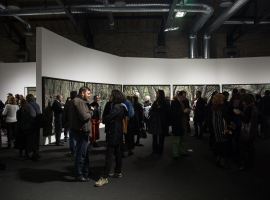



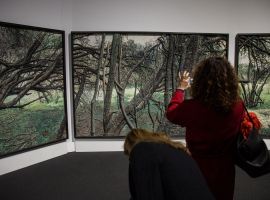




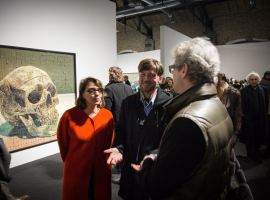




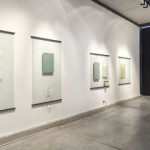 Previous Post
Previous Post Next Post
Next Post